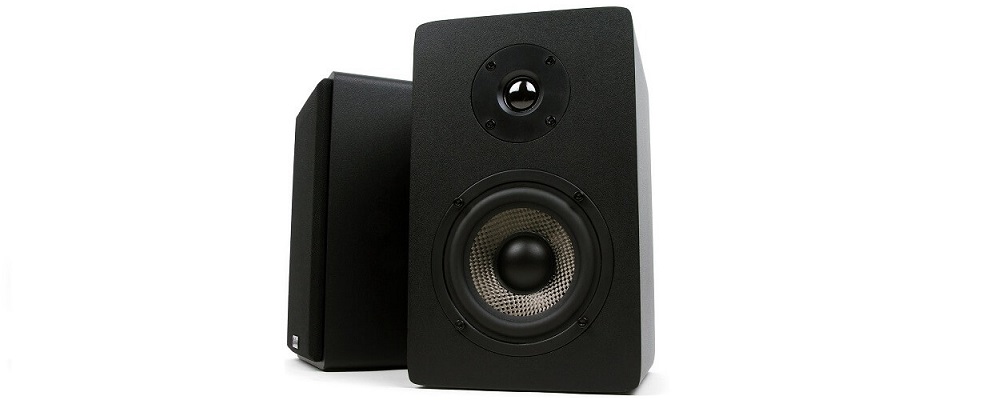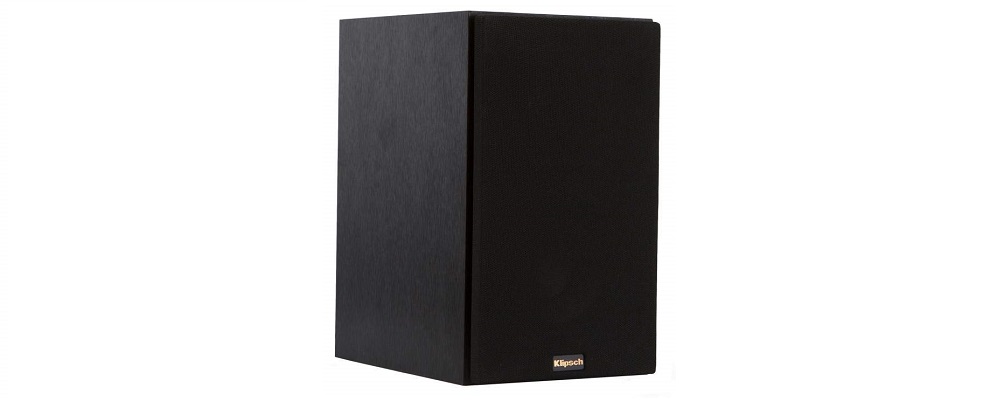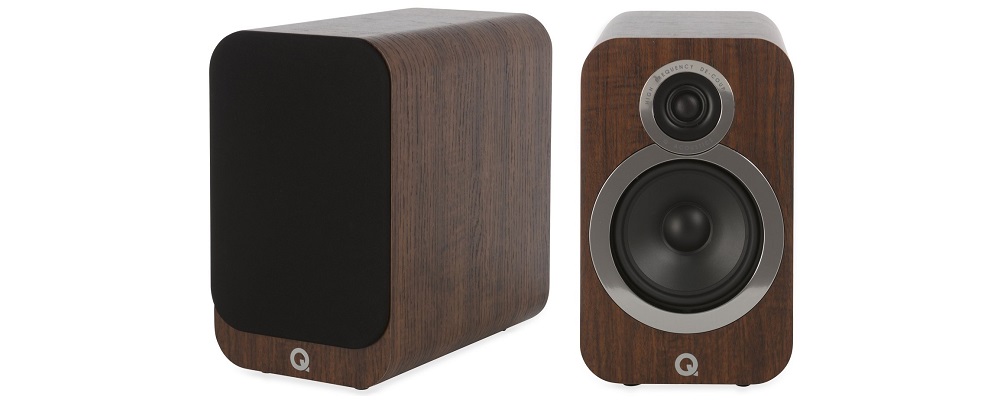Before reviewing the best passive bookshelf speakers, let’s see the essence of passive technology. Most speakers on the market are passive nowadays. Their main feature is no amplifier onboard that requires the external source of amplification (stereo amp or AVR) to drive the speakers sufficiently through the wired connection. Besides, they have neither power source nor volume control.
This peculiarity expands the possibilities to pick amps tailored to the audio system. The best passive bookshelf speakers contain some high-end crossover components to adjust the sound that may be different toward the end than it was in the beginning. Those components convert the signal into waves sending them to their drivers. On their way, they lose some loudness, quality, and power. The external amp’s task is to improve the sound.
When integrating passive models in the stereo or home theater system, one should match them to the amp and other components correctly to upgrade the whole system. That means the necessity to choose compatible amps and other equipment to ensure the enhanced sound but not the degraded one.
Powered speakers have a built-in amp and plenty of crossover components while passive units have only a few crossover parts. They split the sound into frequencies and sent them to the drivers but everything takes place inside the speakers. The signal goes to the player, PC, laptop, TV, or any other source without any external calibration. That saves time but limits the opportunities to enhance the sound, making it crucial to think of high-quality speakers to ensure clear and powerful sound.
That’s why passive speakers are intended to upgrade the audio or home theater system while active products drive more simple digital devices like a CD player or a turntable. If you haven’t decided what type of speakers to choose, read more in the article about the best bookshelf speakers.
Best Passive Bookshelf Speakers Reviews
Micca MB42X – Advanced Crossover in Sturdy Cabinet
This model has nice round edges, graphite laminate finish, and fancy magnetic grills. The speakers are tiny (9.5 x 5.8 x 6.5 inches) and require solid stands in case of placing them on the desk on the side of the computer. The MB42X is equipped with 4-inch carbon fiber woofer that sits into the effective waveguide. Its sensitivity is 85dB that is not much but enough for a small room and is typical for products in this price range.
The speakers have optimized 18 dB/Octave crossover circuit inside to enjoy to their capabilities. This crossover provides the optimum sound reproduction when dividing the signal into two separate bands and directing one of them to the tweeter and the other one – to the woofer.
This unit has the right to be the best passive bookshelf speaker due to its frequency response that is good across the range and despite its significant depression in midrange and low bass. This issue can be solved with the aid of EQ. For example, when using the speakers for watching and listening content from the computer, free software APO Equalizer and Room EQ Wizard (REW) can solve that problem.
Pros
- The speakers handle the typical movie soundtrack and dialogs, as well as TV shows.
- The power of bass allows dispensing with the sub in a small room.
Cons
- Demand extra cash to connect them to a receiver or an amp because wires are not in the box.
- Some distortions at high volumes are audible.
Klipsch R-14M – Versatile Speakers to Produce Clear Sound
The best passive bookshelf speakers reviews should include one more well-built sound system – the Klipsch R-14M. The speakers designed with a compact size of 7.5 x 5.9 x 9.8 inches, removable grille, black polished veneer, and copper-colored woofer cone. Unlike many other passive speakers, this model can be hooked up to a digital source via both the amp and normal A/V connection. However, the amp is highly recommended to calibrate sound. The R-14M can perform well as left, right, center, or surround speakers.
The unit features brand 90×90 Tractrix Horn tech to provide better performance of reproducing low-frequency sounds and wider high-frequency coverage. The LTS tweeter minimizes sound distortion even at the highest volume. Its rear-firing port is positioned to avoid turbulence even at low frequencies. As a result, the speakers reproduce clean and precision sound for the music of all types but with a bit of harshness at high volumes.
Pros
- Stereo separation is flawless.
- Work well with other Klipsch speakers of lower quality.
Cons
- The speakers don’t have Bluetooth.
- No USB port to connect mobile devices.
ELAC Debut 2.0 B6.2 – Sounds Great without a Sub
The model is designed with dimensions of 10.6 x 7.7 x 14.8 inches, retro appearance with an old-school black ash wrap, and huge (for the speakers in this price range) 6.5-inch aramid fiber woofer. It has a plastic grille and six plastic pegs that fix into rubberized sockets on the front baffle. To remove both this grille and metal tweeter cover is desired to get better sound.
There is no Bluetooth, but Bluetooth amplifier can be added for it. The unit comes with the additional bracing installed to minimize the possible sonic coloration. A sub is not necessary to enjoy the sound they produce. This ability makes the speakers great for rock and jazz. The bass is not booming but tight and punchy enough. The high frequencies are very clear and detailed with no harshness. In general, the sound is well balanced and neutral.
The speaker’s tweeter has silk soft-dome design to extend the frequency response to 35 kHz. The speakers have an average 87dB sensitivity to perform well in small spaces. To enhance the sound, the receiver up to 120W per channel is recommended.
Pros
- It is front-ported to place it close to the wall.
- The speakers have very sturdy, well-made binding posts.
Cons
- They are too big to place them on a desk.
- It takes the speakers to run in for at least a day before they reach their potential.
Q Acoustics 3020i – Wide Detailed Soundstage, Stylish Design
This product is among the best passive bookshelf speakers due to its amazing design and despite their formidable dimensions (11.1 x 6.7 x 11 inches). Maybe, they are not compact but promise much for bass. The model has 0.8-inched decoupled “High Frequency Driver” with a wide surround to enhance sound dispersion. The unit is available is several finishes – Graphite Grey, Arctic White, English Walnut, and Carbon Black.
Its point-to-point cabinet bracing increases the internal rigidity to minimize the structural vibrations that usually provoke distortions. The engineers made a 25% deeper cabinet (now it is almost the same as its height) to boost dynamics. They managed to achieve success but now the speakers are too deep for a bookshelf placement.
The speakers perform excellent delivering rich and warm sound with a high level of dynamism and good tonal balance. It is also accurate and detailed. All those peculiarities make this model versatile and capable of tracking any musical genre in a small to mid-sized room. It can reproduce dense orchestral textures where the listener can easily differentiate even similar instruments – viola and violin, for example.
Pros
- The speakers provide true tonality for the instruments that are hard to reproduce well (saxophone, the wide ranged piano, diaphanous).
- Provide accurately calibrated dialogs and dynamic in-motion sound effects in movies.
Cons
- The performance grows a bit heavier when installing them right up against the wall, a few feet away is recommended.
- The size makes the speakers not convenient for using them in a small room, they need space to be installed on stands a bit far from the wall.




